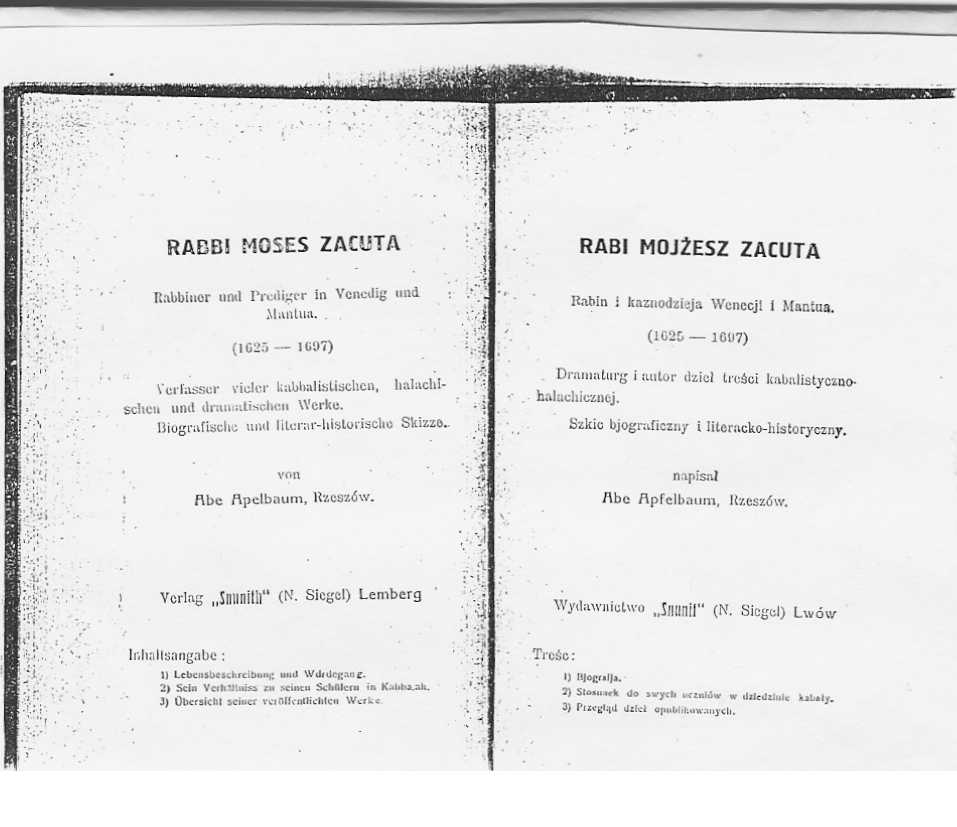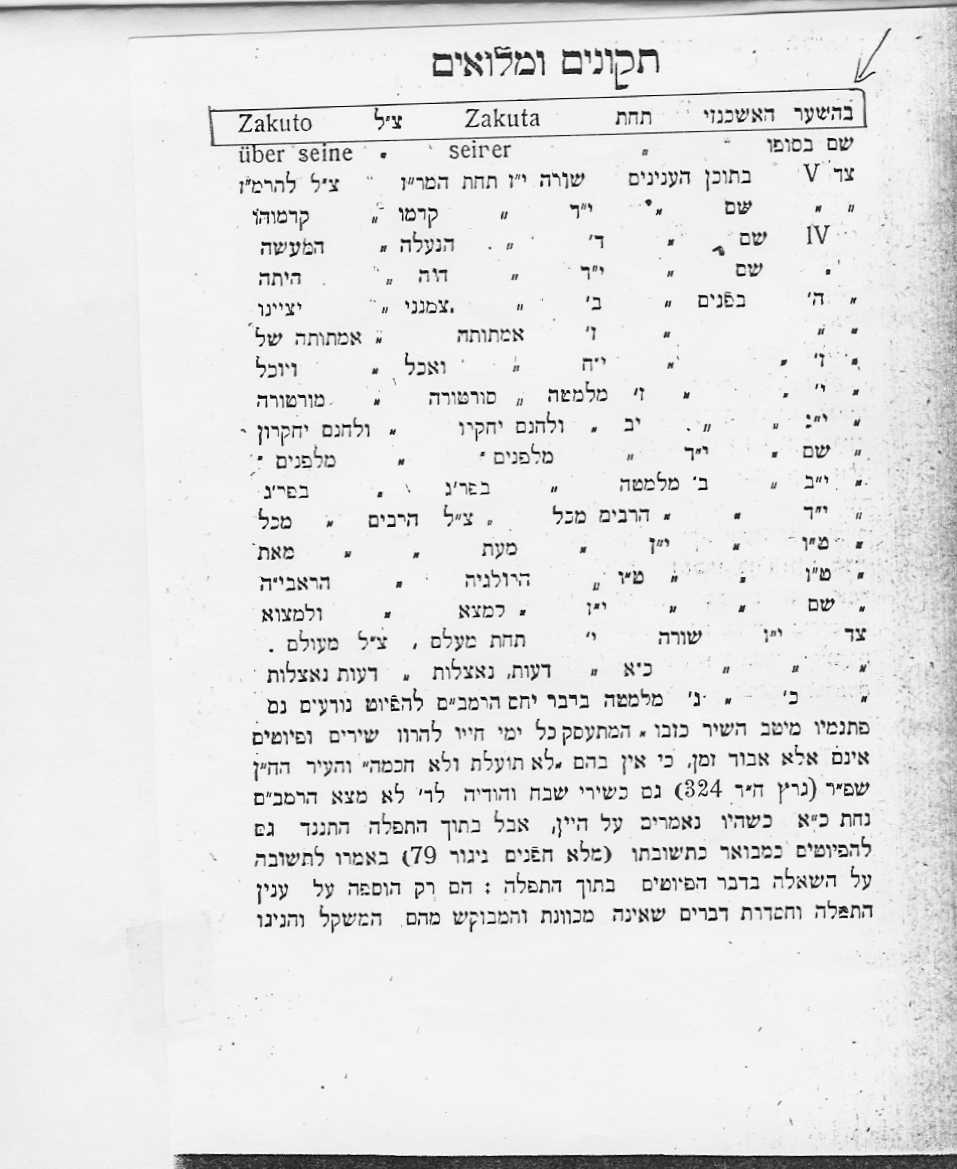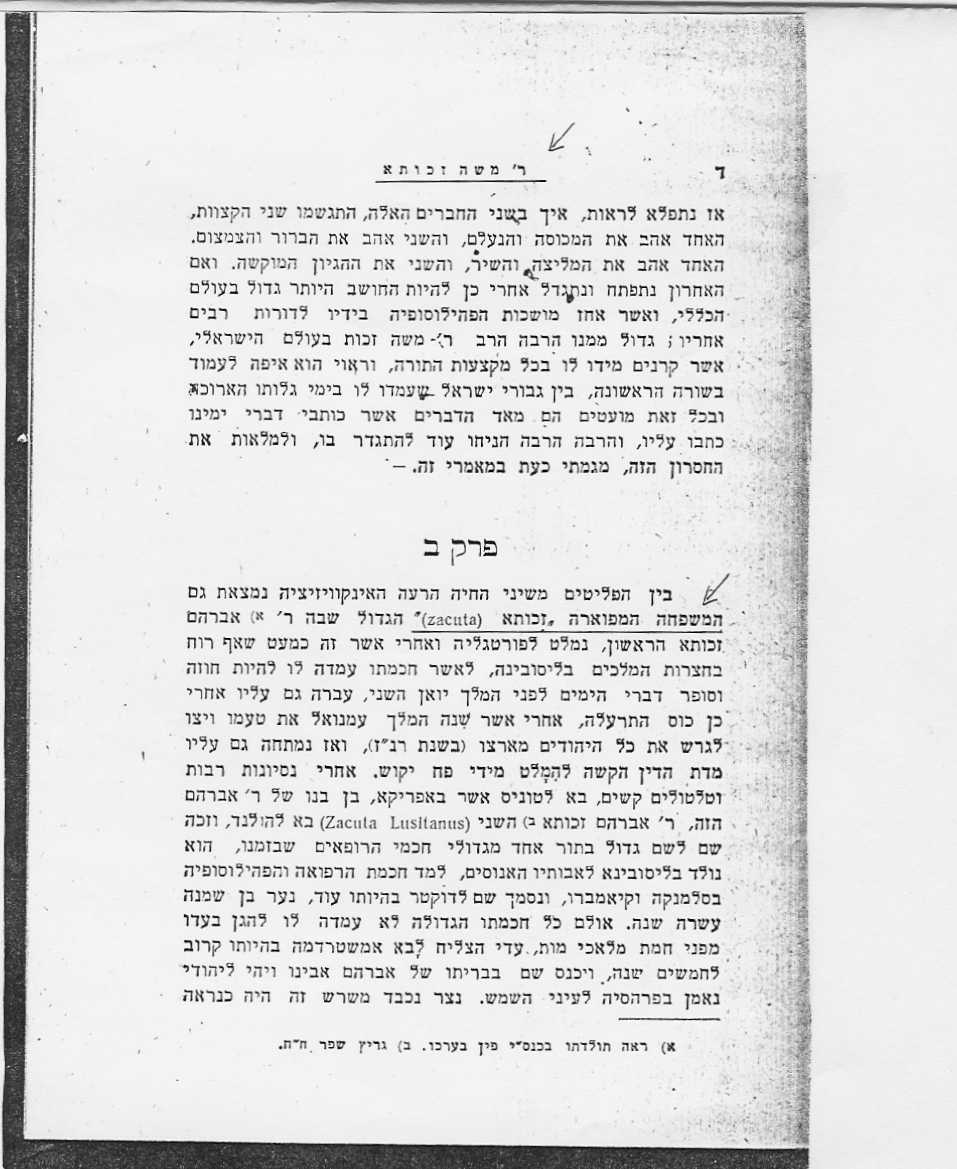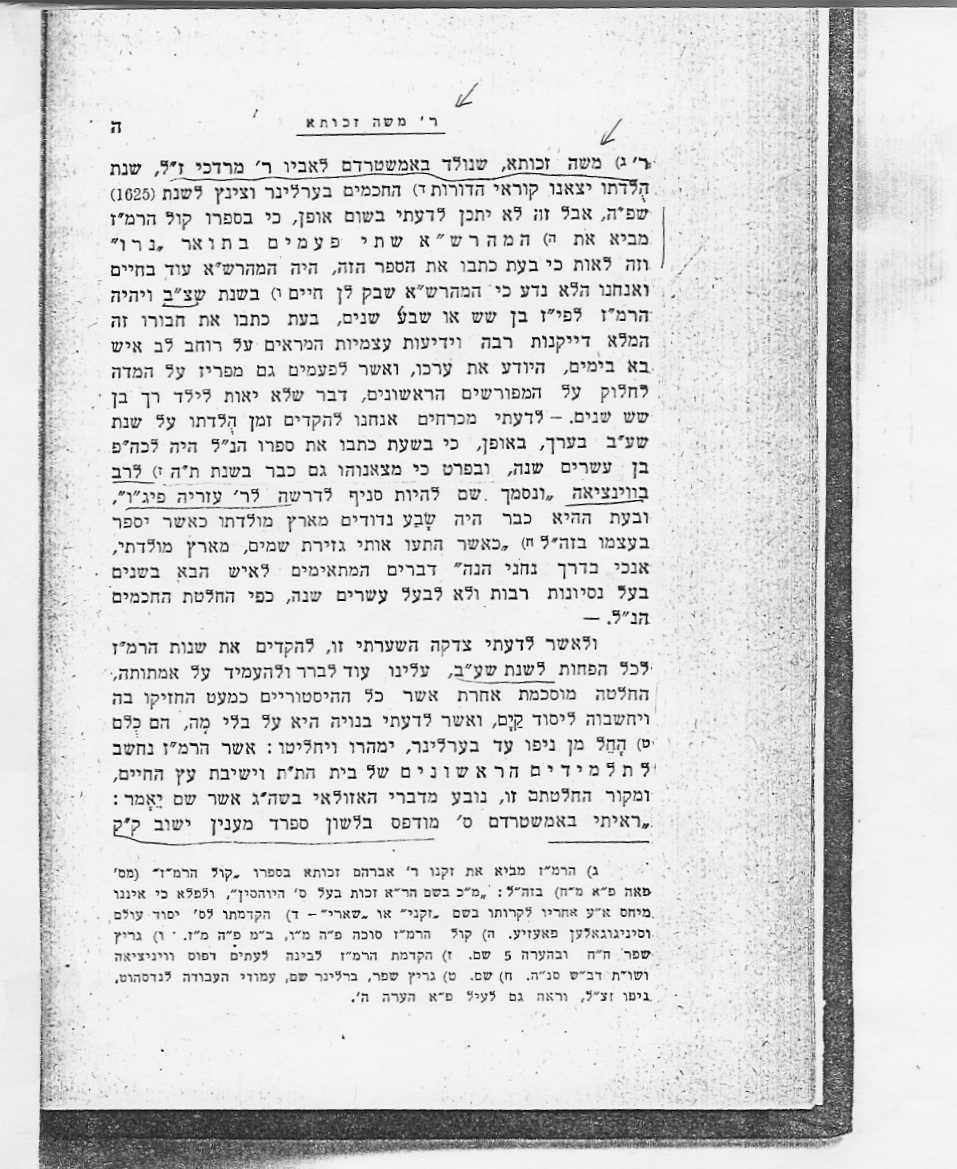Following the advice of Bar-Natan and Mckay, we perused Aba Applebaum's biography
and were astonished to find that right on the title page R. Moshe is called
"Zacuta" in Polish and German.

But in the Table of Errata we find that the correct form in German is
"Zakuto".

In the second chapter (pp.4-5) it says that he was known as אתוכז השמ 'ר, and
that he was a scion of the illustrious " אתוכז (Zacuta)" family:

Here too, and so on:
